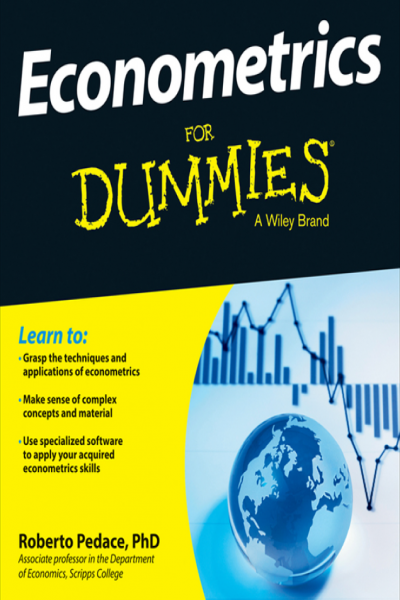Econometrics For Dummies
Sách dạy về thống kê trong kinh tế học, cách đọc, hiểu và xử lý dữ liệu.
Đặt in tại HoaXanh - Sách bìa màu đóng gáy keo nhiệt.
- 150,000đ
- Mã sản phẩm: D
- Tình trạng: 2
Econometrics For Dummies to help you get the most out of your economics education. By using econometrics carefully and conscientiously, you can get the data to speak. But you better learn the language if you hope to understand what it’s saying!
Getting Started with Econometrics
Econometrics: The Economist’s Approach to Statistical Analysis
Evaluating Economic Relationships
Using economic theory to describe outcomes and make predictions
Relying on sensible assumptions
Applying Statistical Methods to Economic Problems
Recognizing the importance of data type, frequency, and aggregation
Avoiding the data-mining trap
Incorporating quantitative and qualitative information
Using Econometric Software: An Introduction to STATA
Getting acquainted with STATA
Creating new variables Estimating, testing, and predicting
Getting the Hang of Probability
Reviewing Random Variables and Probability
Distributions Looking at all possibilities: Probability density function (PDF)
Summing up the probabilities: Cumulative density function (CDF)
Putting variable information together: Bivariate or joint probability density
Predicting the future using what you know: Conditional probability density
Understanding Summary Characteristics of Random Variables
Making generalizations with expected value or mean
Measuring variance and standard deviation
Looking at relationships with covariance and correlation
Making Inferences and Testing Hypotheses
Getting to Know Your Data with Descriptive Statistics
Calculating parameters and estimators
Determining whether an estimator is good
Laying the Groundwork of Prediction with the Normal and Standard Normal
Distributions Recognizing usual variables: Normal distribution
Putting variables on the same scale: Standard normal distribution (Z)
Working with Parts of the Population: Sampling Distributions Simulating and using the central limit theorem Defining the chi-squared (χ2), t, and F distributions
Making Inferences and Testing Hypotheses with Probability
Distributions Performing a hypothesis test
The confidence interval approach
The test of significance approach
Building the Classical Linear Regression Model
Understanding the Objectives of Regression Analysis
Making a Case for Causality
Getting Acquainted with the Population Regression Function (PRF)
Setting up the PRF model Walking through an example
Collecting and Organizing Data for Regression Analysis
Taking a snapshot: Cross-sectional data
Looking at the past to explain the present: Time-series data
Combining the dimensions of space and time: Panel or longitudinal data
Joining multiple snapshots: Pooled cross-sectional data
Going Beyond Ordinary with the Ordinary Least
Squares Technique Defining and Justifying the Least
Squares Principle Estimating the Regression
Function and the Residuals
Obtaining Estimates of the Regression Parameters
Finding the formulas necessary to produce optimal coefficient values
Calculating the estimated regression coefficients
Interpreting Regression Coefficients
Seeing what regression coefficients have to say
Standardizing regression coefficients
Measuring Goodness of Fit Decomposing variance
Measuring proportion of variance with R2
Adjusting the goodness of fit in multiple regression
Evaluating fit versus quality
Assumptions of OLS Estimation and the Gauss-Markov Theorem
Characterizing the OLS Assumptions Linearity in parameters and additive error Random sampling and variability Imperfect linear relationships among the independent variables Error term has a zero conditional mean; correct specification Error term has a constant variance Correlation of error observations is zero Relying on the CLRM Assumptions: The Gauss-Markov Theorem Proving the Gauss-Markov theorem Summarizing the Gauss-Markov theorem Chapter 7: The Normality Assumption and Inference with OLS Describing the Role of the Normality Assumption The error term and the sampling distribution of OLS coefficients Revisiting the standard normal distribution Deriving a chi-squared distribution from the random error






